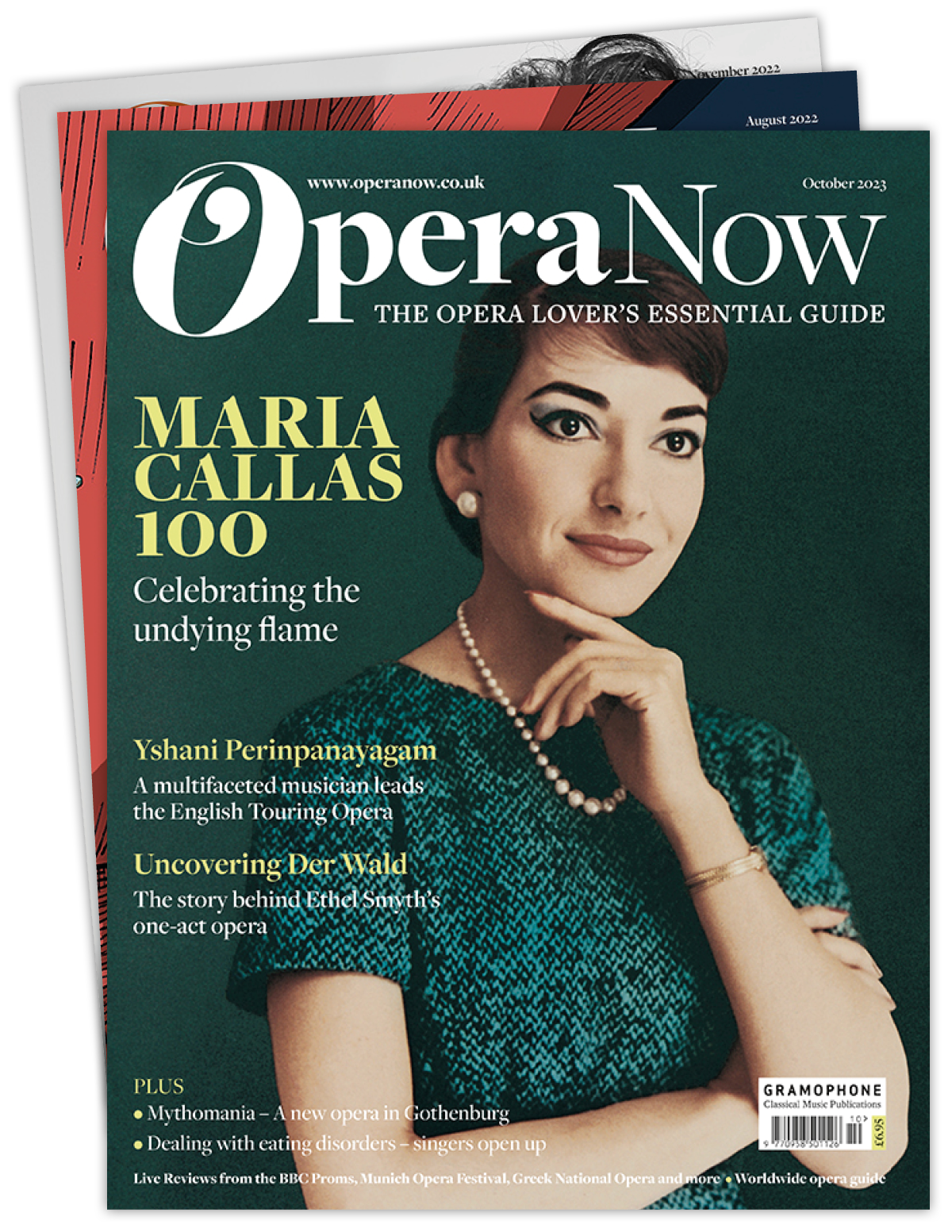Pavel Haas: The Charlatan at Janáček International Festival in Brno | Live Review
Mirka Zemanová
Thursday, November 14, 2024
A new production of The Charlatan by Pavel Haas, one of Janáček's most gifted students, showcases the prowess of the Czech composer's musical work
⭐⭐⭐⭐
 The cast of Haas's The Charlatan at Janáček International Festival | Photo: Marek Olbrzymek
The cast of Haas's The Charlatan at Janáček International Festival | Photo: Marek Olbrzymek
Pavel Haas (1899-1944), whose only opera The Charlatan was shown on 8 November 2024 at the historic 1882 Mahen Theatre in Brno, in a new production by Ondřej Havelka, was one of five gifted Czech composers of Jewish origin who perished in WWII. The deaths of Haas, Gideon Klein, Hans Krása, Erwin Schulhoff and Viktor Ullmann, at the hands of the Nazi regime, represent a huge loss for Czech music – all were in the prime of their lives.
Modern productions of operas by Hans Krása and, in particular, by Viktor Ullmann have been performed in many countries. However, Havelka's The Charlatan (Šarlatán) in Brno following the première at the National Moravian-Silesian Theatre in Ostrava on 10 October (within the framework of the 9th Janáček International Festival) is only the second modern production since the première at the same theatre in 1938. It is also only the second Czech production in almost 90 years of this tragicomic opera's existence.
Haas said in an interview in Moravské Slovo in 1938 that the music, 'despite all the modern means of expression, has a folk character. I have also tried to express the period character of the story. The rapid changes of situations, the contrasting colours of the scenes and the constant movement certainly influenced the overall style of the music.'
The opera was not seen again on stage for 60 years until the Wexford Opera's production in 1998 (although concert performances were given in Prague in June 1997; these were recorded by Decca and issued on record as part of Entartete Musik series).
Haas wrote the libretto himself after discovering a popular abridged edition of a fictional chronicle Doctor Eisenbart, by the German novelist Josef Winckler (1881–1966). The story takes place during the Thirty Years' War, and describes the life of an itinerant quack Johann Andreas Eisenbart and his retinue of rogues. Haas had to create the libretto without the writer's permission – no author could risk, at the time, collaboration with a composer of Jewish origin. To disguise his source further, Haas changed Eisenbart's name to Pustrpalk, the second servant in Mastičkář, the oldest Czech mediaeval satirical farce written in verse in the 14th century. The libretto was considered slightly problematic even at the 1938 première, and I have found the second part of the opera more cohesive.
The music of The Charlatan is influenced by Martinů, Stravinsky, Honegger and, not surprisingly, also by Haas' strict teacher Janáček. Echoes of jazz or, more precisely, syncopated dance music of the 1920s and 1930s, could also have been heard. In fact, some of Hollywood film music of the 1950s, indeed music heard in Disney films, is vaguely reminiscent of parts of Haas's score. However, there are also many affecting lyrical passages in the opera.
The large orchestration includes bass clarinet, contrabassoon, four horns, three trumpets, no fewer than five trombones, as well as tuba plus a harp, xylophone, timpani and drums, and the various combinations produce intriguing sonorities.
 A scene from Haas's The Charlatan at Janáček International Festival | Photo: Marek Olbrzymek
A scene from Haas's The Charlatan at Janáček International Festival | Photo: Marek Olbrzymek
The Charlatan is an ensemble opera, without big arias for soloists or duets, and exceptional voices are therefore not essential, although the score is demanding. The NDM does, however, have several good soloists, and of these I liked Pavol Kubáň as Pustrpalk, Soňa Godarská as Amaranta and Martin Gurbaľ as the monk Jochimus. All the performers of humorously entitled characters, from Sour Milk and Cobweb to Fire Eater and Snake Charmer, also deserve a mention.
The orchestra and chorus under Jacob Klecker acquitted themselves well. The chorus was also used to good advantage in many crowd scenes by Havelka, well-known in the Czech Republic. The commedia dell'arte elements were cleverly used, and there were also impressive acrobatics by four young members of the Ostrava ballet. Other important aspects of Havelka's staging – the spatial arrangement, the shadow play within a fabric-covered central box, and the occasional filmed scenes in the background, whether in colour or black and white, all helped to illuminate the story. However, in the otherwise fitting design by Jakub Kopecký I did not understand the purpose of the green fabric drop (which seemed to be of poor quality) around all three sides of the stage.
Much as I liked some costumes by Kateřina Štefková, there was some disparity between the styles. Some male characters' costumes were evidently based on the 17th century popular form of dress, and this clashed with others which definitely looked as being from a later period (for example, Amaranta's huge white crinoline, even though it was specifically mentioned in the libretto). It was not easy to see whether the opera was partly transposed to another, later era, or not.
The inclusion of this operatic collage in seven scenes in the programme of this year's Janáček International Festival was an important dramaturgical step. For all the minor problems in the libretto, the standard of Haas' work shows how much more, had he been able to live and continue to create, he could have brought to the treasure trove of Czech music.
The 9th Janáček International Festival runs until 24 November. janacek-brno.cz/en/






